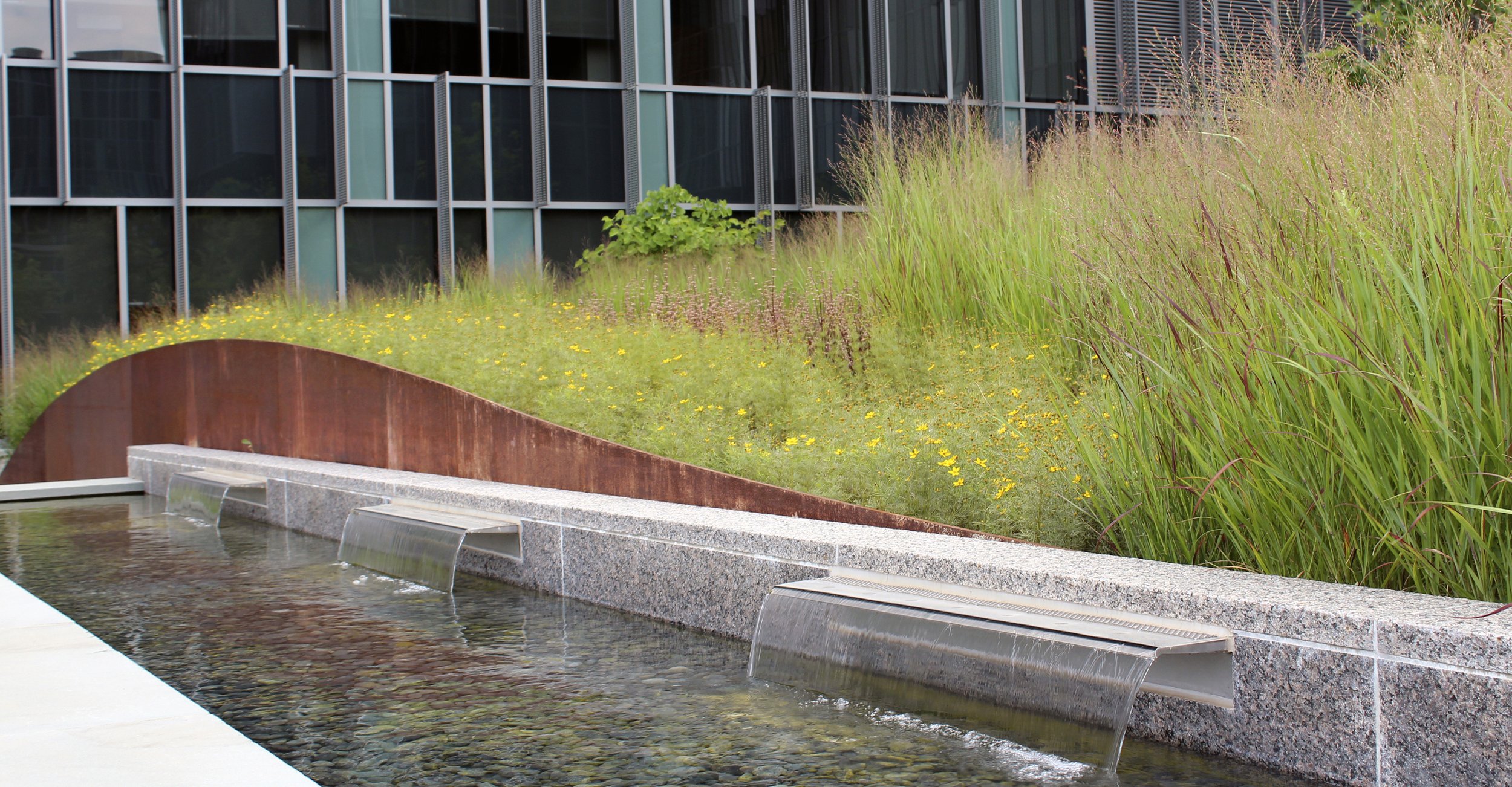
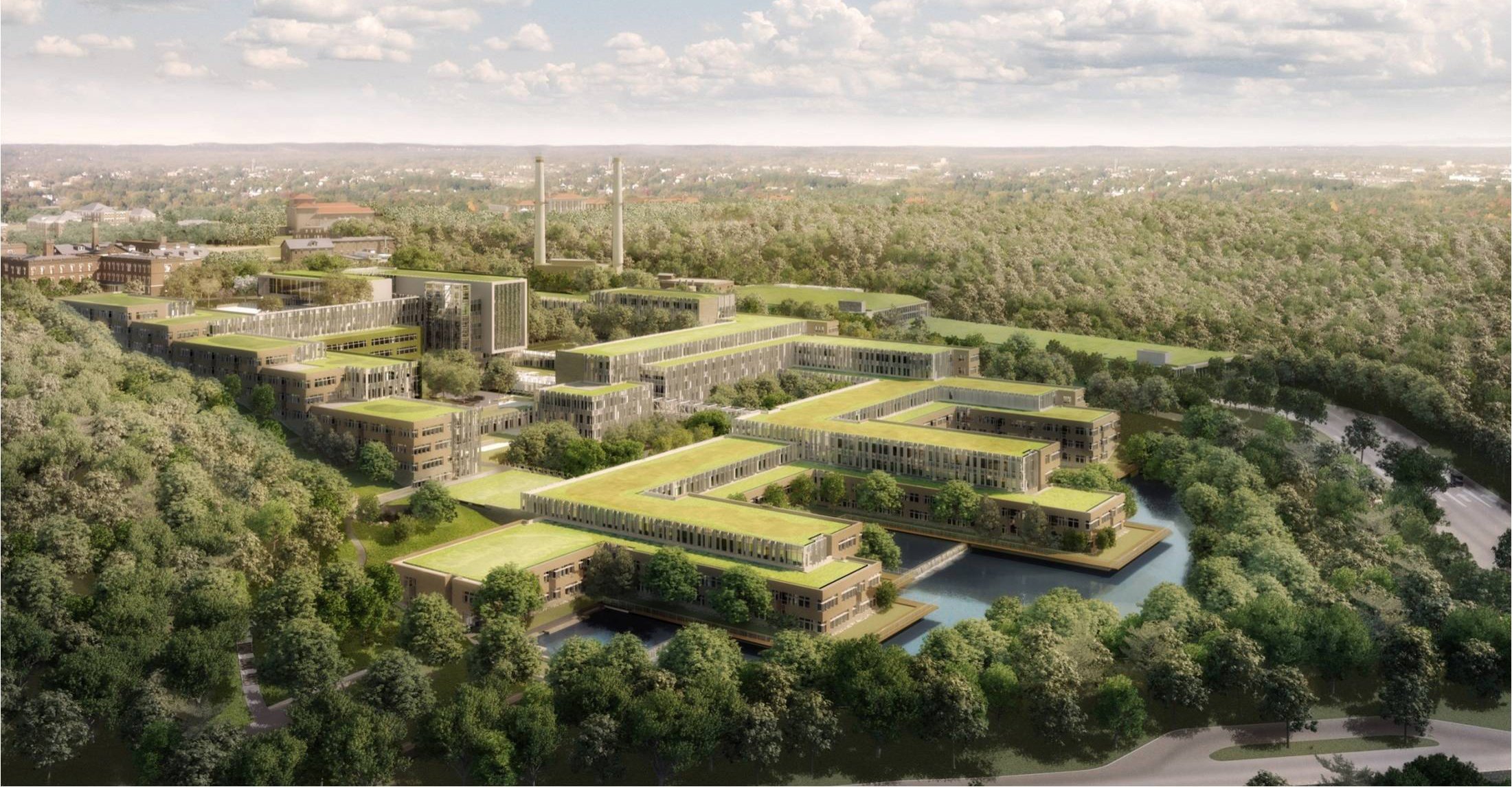
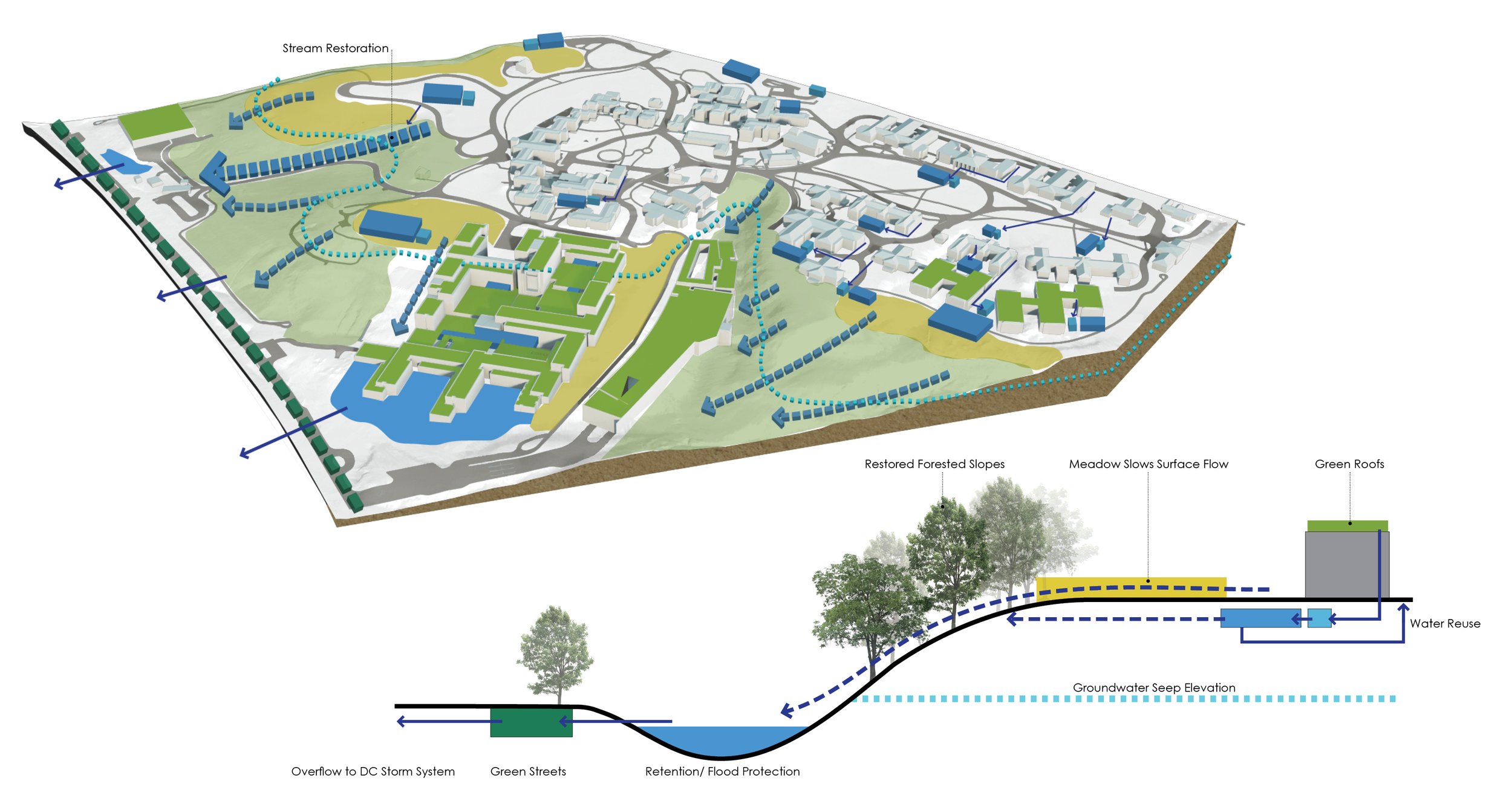
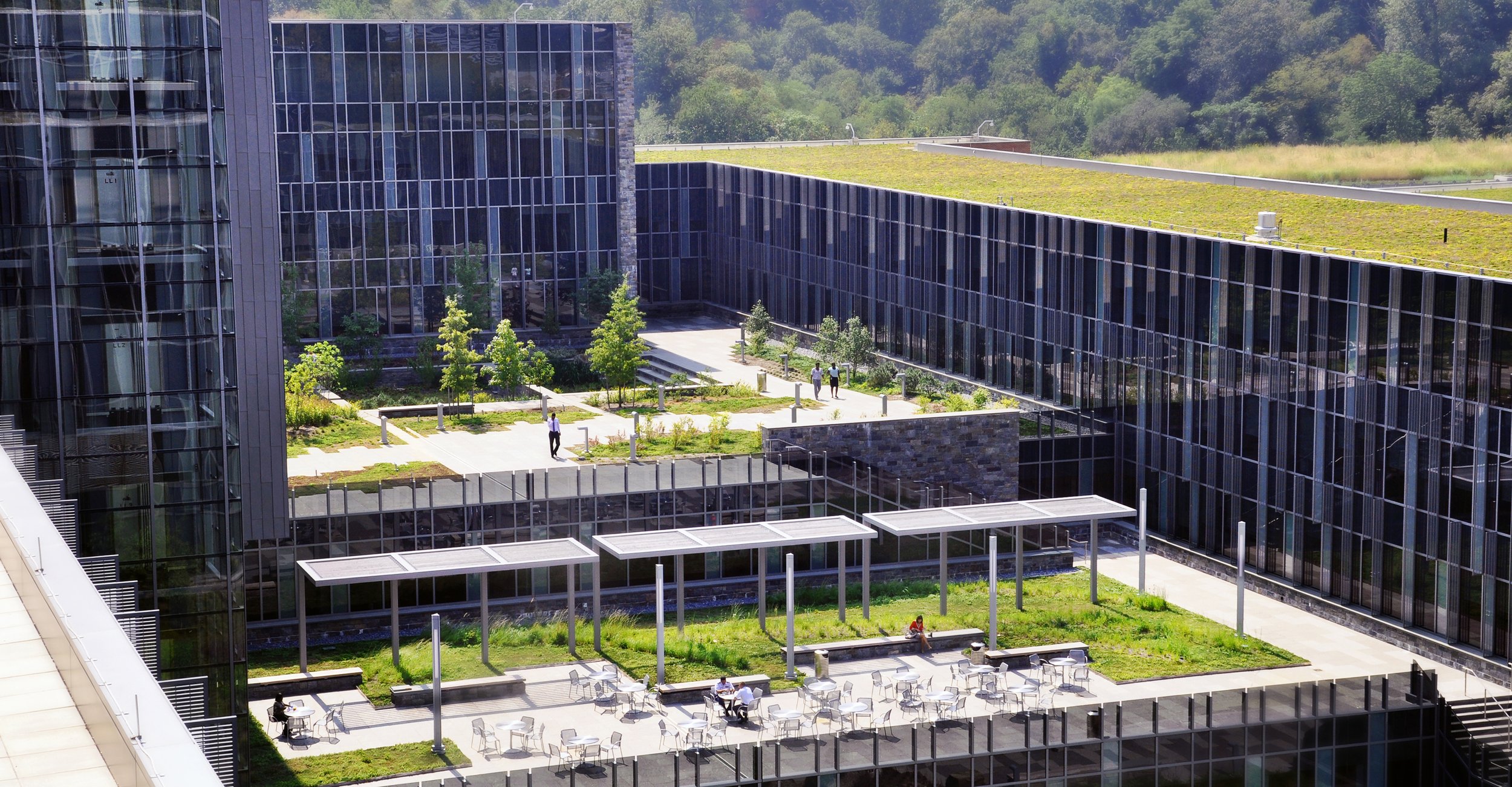
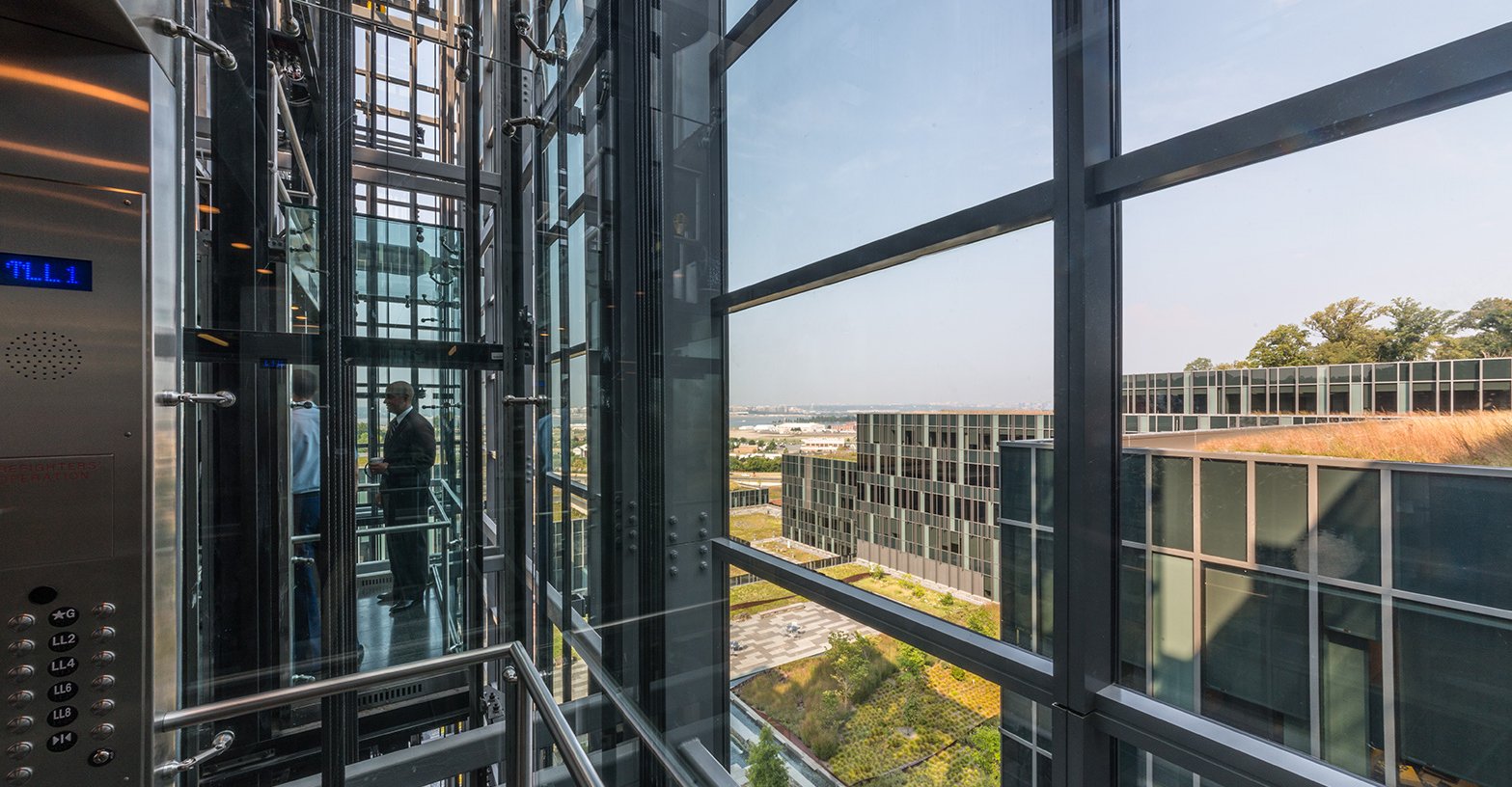
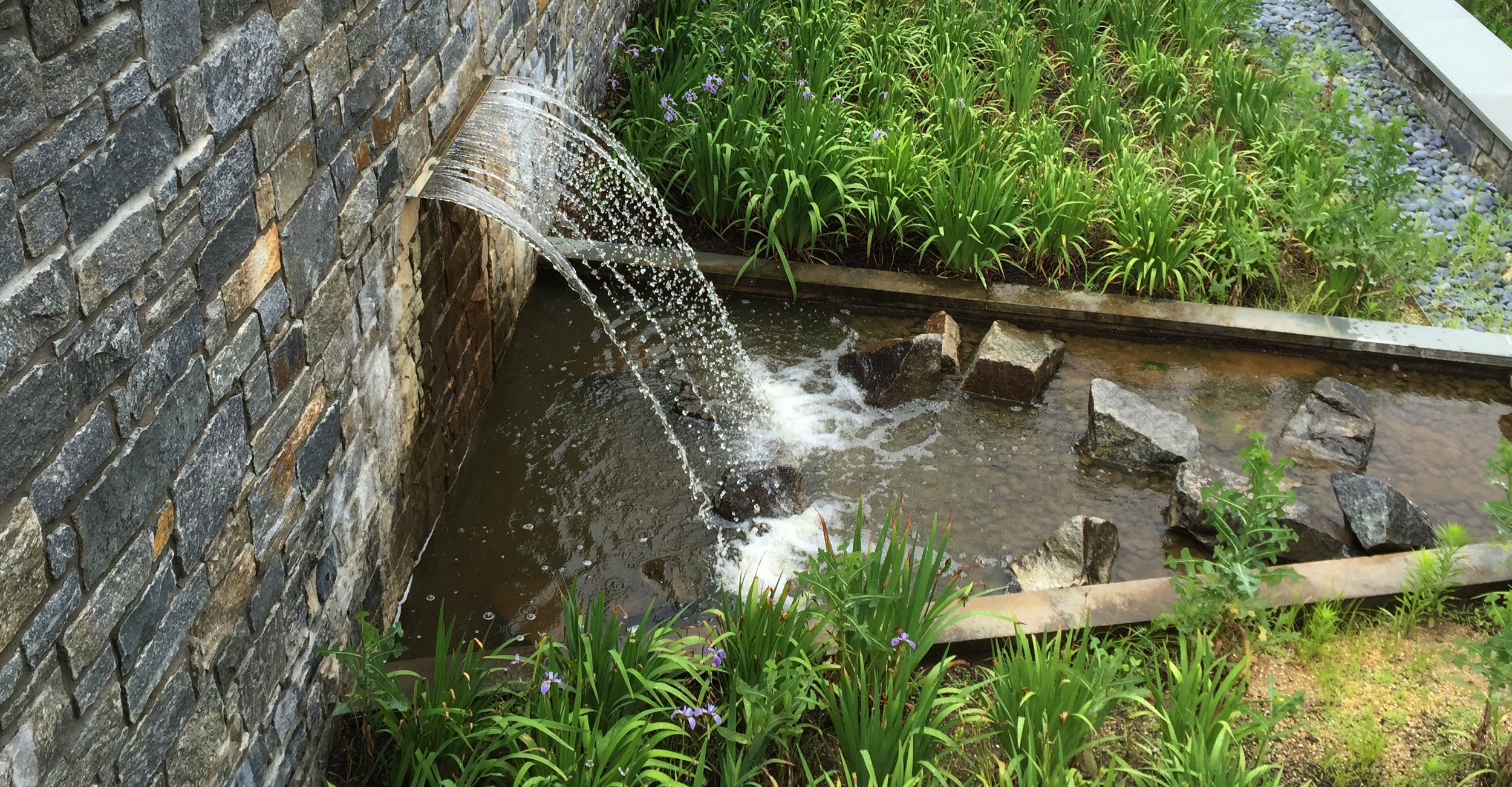
what if our workplace landscapes really worked for the well-being of employees and their environment?
U. S. COAST GUARD HEADQUARTERS
The U.S. Coast Guard Headquarters cascades down the hillside within the historic St. Elizabeths West campus, a National Historic Landmark significant for its role as a nineteenth-century hospital complex. We worked closely with Perkins + Will and HOK to integrate this 1.2 million-square-foot building within its surrounding site through a series of courtyards that represent local eco-regions and one of the largest green roofs in the United States. The interconnected, outdoor rooms allow employees to walk through almost all of the landscaped spaces without having to enter the building. The therapeutic function of the landscapes harmonizes with the original intent of the historic landscape designed for St. Elizabeths Hospital. The landscape provides a restorative workplace through a network of outdoor amenities that manage stormwater and provide native habitat within a functional landscape of exceptional performance and beauty.
The site’s high performance landscapes are designed to be integrated with the building systems; harvesting, treating, and reusing stormwater that is generated from both the site and buildings. In addition to green roofs, the stormwater management system includes wet ponds, bio-swales, and step pools to handle stormwater runoff from the entire campus to treat the 2-year, 15-year, 100-year storms, and beyond to accommodate future development.
The overall landscape structure of the site is organized around a series of courtyards, edges, and green roofs that create a “green veil” over the building and provide continuity in the landscape between the existing woodlands that surround the site and the historical campus to the east; preserving the “Green Bowl” – a series of bluffs and escarpments that surround Washington, DC.
The courtyards, as with the building, negotiate a 120 feet grade change by stepping down topographically from east to west to one of the lowest areas of the campus. The progression of terraced courtyards provides a wonderful canvas for highlighting five different ecoregions, where physiographic regions transition from the Blue Ridge and outcrop barrens of the piedmont (entrance courtyard) to the lowlands of the coastal plain (pond).
The courtyards are united by the flow of water coursing through each one, culminating in a 320,000 cubic feet wet pond that maintains its water quality with a native, vegetated edge and aquatic shelf. On grade conditions of the courtyards allowed the designers to plant larger tree species which, over time, will fill in and allow the building to recess back into the adjacent woodland.
PROJECT INFORMATION
Location: Washington, DC
Size: 32 Acres
Role: Design Excellence Landscape Architect
Services: Master Planning, Landscape Management Guidelines, Sustainable Site Design, Stormwater Management, Environmental Analysis, Construction Documentation and Observation, Historic Preservation and Adaptive Reuse
PUBLICATIONS
Bradford McKee, “The Wetter, The Better: On the New U.S. Coast Guard Headquarters Grounds, Andropogon and HOK Turn Stormwater into Lifeblood” in Landscape Architecture Magazine, August 2015: 116-135.
Christopher D. Ellis and Dylan Reilly, 2015 Landscape Performance Report: U.S. Coast Guard Headquarters, University of Maryland, College Park, MD, 2015.
Kim O’Connell, “Coast Guard Headquarters is Striking, Surprising, and Sustainable” in AIArchitect, Vol. 21, February 7, 2014.
AWARDS
2016 GSA Design Award from the U.S. General Service Administration, with Perkins + Will
2016 GSA Planning Award from the U.S. General Service Administration, with Perkins + Will
2013 ASLA PA/DE Merit Award in Analysis & Planning from the Pennsylvania-Delaware Chapter of the American Society of Landscape Architects
